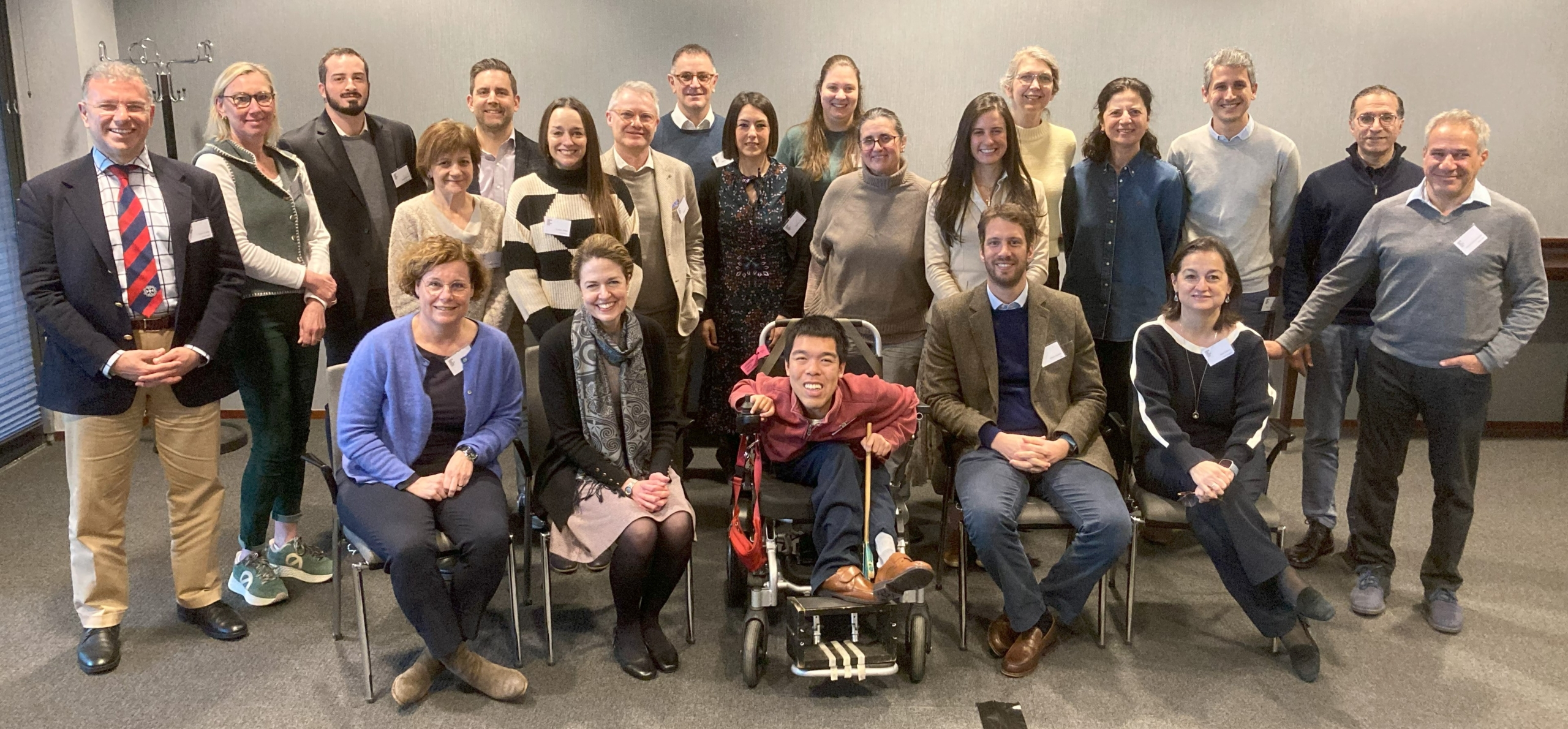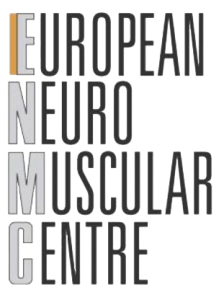Establishing Expert Care Recommendations for LAMA2-RDs: A Prototype for the Development of Congenital Muscular Dystrophy Subtype-Specific Care Guidelines
- Number 283
- Date 17 January 2025
283rd ENMC International Workshop:
Location: Hoofddorp, The Netherlands
Title: Establishing Expert Care Recommendations for LAMA2-RDs: A Prototype for the Development of Congenital Muscular Dystrophy Subtype-Specific Care Guidelines
Date: 17-19 January 2025
Organisers: Dr A. R. Foley (USA), Prof. A. Klein (CHE), Dr A. Sarkozy (UK), Dr A. Zambon (ITA)
Early Career Researchers: Dr G. Cicala (ITA), E. de Laat (NLD)
Translations of this report by:
Italian by Dr G. Cicala
Dutch by E. de Laat
Portuguese by Dr Clara Camelo
Spanish by Dr D. Natera-de Benito
German by Prof. A. Klein
Turkish by Prof. G. Haliloğlu
French by Prof. S. Quijano-Roy
Participants: Dr L. Alfano (USA), Prof. C. Bönnemann (USA), Dr C. Camelo (BRZ), Dr F. Chiusolo (ITA), Prof. D. Duboc (FR), Prof. G. Haliloğlu (TUR), Dr F. Munell (ESP), Dr D. Natera-de Benito (ESP), Prof. S. Previtali (ITA), Prof. S. Quijano-Roy (FRA), Dr. H. Sawnani (USA), Prof. U. Schara-Schmidt (DE), Dr. Federica Trucco (ITA), Dr T Tsirikos (UK), Prof. N. Voermans (NLD), Dr G. Dziewczapolski (patient representative, USA), Mr J. Moy (patient representative, USA), Mr B. Verbrugge (patient representative, NLD).
Background information
LAMA2-related dystrophies (LAMA2-RDs) are one of the most common forms of congenital muscular dystrophy and are caused by mutations in the LAMA2 gene. The LAMA2-RDs are most commonly characterised by early onset muscle weakness but can present with different clinical severity, ranging in age at presentations of first symptoms from birth to adulthood and can be associated with symptoms and manifestations of disease in addition to muscle weakness, including respiratory and nutritional difficulties, tightness of the joints (so-called ‘contractures’) and curvature of the spine. While at the present moment there is no cure, symptom management is key, and several promising therapies are under development. Because of the rarity and complexity of the LAMA2-RDs, there is urgent need for LAMA2-RD-specific clinical care guidelines, to improve care and support clinical trials readiness.
Workshop aims
Aim 1: Gather international experts to review and summarise current evidence in the field of diagnosis, management and care of LAMA2-RDs to identify knowledge gaps. In particular, the following topics have been covered: diagnostics, cardiac, respiratory and emergency care, nutrition, spinal and bone health, physiotherapy and rehabilitation, brain and nerve involvement, feeding, speech and oral care, cognition and transition to adulthood.
Aim 2: Suggest expert care recommendations and reach an agreement on the best methods to develop care guidelines for LAMA2-RD.
Aim 3: Create a model which can work as a prototype for the development of care guidelines for further types of congenital muscular dystrophies (CMDs).
Deliverables
The workshop participants reviewed and agreed on a number of expert care recommendations and suggestions for patients with LAMA2-RDs. Clear strategies how to share this information among researchers, doctors and patient communities were also discussed and decided upon. The participants also felt that the care guidelines should be practical and readily available and up to date with the suggestion of creating a ‘live' document (an open-access, online document that can be frequently updated).
Impact for the patients and their families
Identifying expert care recommendations for LAMA2-RDs will help patients to receiving more standardised and optimised care. Patients/families can benefit from improved care plans, better support, as well as clearer and more uniform information about available treatments and management. Standardised care will also help to design and deliver future clinical trials.
Next steps
The participants agreed on a number of expert care recommendations that will be included in the workshop report. Further meetings will be held to continue developing the care guidelines and methodology for LAMA2-RD, that will promote the following of similar processes for establishing care guidelines for other CMDs. The participants also highlighted the importance of sharing and disseminating the information gathered during this workshop on multiple levels (with researchers, doctors, patients and patient organisations). Pilot projects were identified to ensure that knowledge gaps will be filled with ongoing international collaborations to ensure improvement in knowledge about LAMA2-RDs and the standardization and optimisation of the care of patients with LAMA2-RD.
A full report is published in Neuromuscular Disorders (PDF)

ENMC
Lt. generaal van Heutszlaan 6
3743 JN BAARN
The Netherlands
+ 31- 35-5480481
enmc@enmc.org
